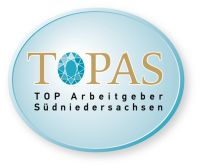
EGU and Copernicus Celebrate 10 years of Interactive Open Access Publishing

Since 2001, the European Geosciences Union (EGU) and the open access publishing house Copernicus Publications have been publishing a large number of well-known geoscientific journals, implementing innovative open access fundamentals to achieve the highest standards of transparency and quality.
The concept behind this branch of open access publishing is to offer worldwide, cost-free access to publications that provide high-quality information on contemporary geoscience topics impacting all of us. As one of the first to embark on this modern approach to publishing, the international union of 10,000 geoscientists known as the EGU, together with the publishing house Copernicus Publications, transferred their scientific journals to this completely new business model, which in 2001 was still in its infancy.
"Our main goal was an advancement of scientific quality assurance through increased transparency and efficiency. It was also clear that scientific publications should be freely accessible. With 'open access', we embarked on establishing a new model of public and transparent peer-review – under the concept of interactive open access publishing with public peer-review." declares Ulrich Pöschl, chair of the EGU Publications Committee, researcher at the Max Planck Institute for Chemistry (MPIC), and initiator of the first interactive open access scientific journal, Atmospheric Chemistry and Physics (ACP).
The seed of ACP's swift success is attributed to the support of Noble prize winner Prof. Paul Crutzen at the MPIC in Mainz. Partnered with the scientific community of the EGU and the services of the publishing house Copernicus, this new journal established itself very quickly. "After only a year, ACP was accepted into Thomson Reuters' Science Citation Index and after only a few years achieved the highest 'impact factor' in its scientific discipline", says Dr. Arne Richter, along with Pöschl and co-initiator Crutzen, the at-that-time publisher of ACP. With ACP, the EGU not only has one of the most prestigious journals with the highest impact factor, it also has the largest volume of all journals in its field (12,000 pages in 2010).
The concept of public peer-review is based on publishing a manuscript after a short initial review as a 'discussion paper'. The expert opinions then appear online in the form of citable commentaries in a freely accessible forum. This allows the scientific community to be involved in the discussion, and if the reviews are positive, the authors can publish their final revised manuscript as an appraised article in the actual journal.
The successful approach was quickly transferred to other new journals, and in some cases also to long-established journals. In the introduction phase, the costs of the open access platform were underwritten by the EGU and Copernicus in order for the authors to test the new offer free-of-charge. After establishment of the periodicals, moderate publication fees were introduced in order to guarantee a sustainable independent business. "Since 2007, as in only after six years, we've moved our open access accounting numbers into the black. We've demonstrated that open access not only offers free access to the sciences and enables improved quality control, but that it also is sustainable economically" says Martin Rasmussen, managing director of Copernicus Publications since 2004.
The costs and author fees are continually on the lower end of the worldwide open access journal cost scale (around 500–1,000 EUR per article, depending on article length and journal format), and in spite of their large success and high impact factors, EGU and Copernicus publishes ACP and the other interactive journals with transparency and even public peer-review regulation, keeping the rejection rate at a very moderate level – only about 15% in contrast to around 50% at comparable traditional journals. This way the scientific quality assurance and publication process has become efficient, fast, and economical.
At this time, the EGU publishes 16 international open access journals through Copernicus Publications across all geoscientific disciplines: ANGEO, ACP, AMT, BG, CP, ESD, GMD, GI, HESS, NHESS, NPG, OS, SE, TC, ADGEO, SMSPS. At Copernicus, there are a total of 25 scientific journals offering free access, 14 of which have implemented public peer-review and 11 using traditional peer-review. Currently 11 EGU titles have a Thomson Reuters' Impact Factor, placing them in the top echelon of their discipline.
View and download this press release.
Find an overview of all EGU journals.
Contact Media & Communications at Copernicus Publications and at the EGU.




